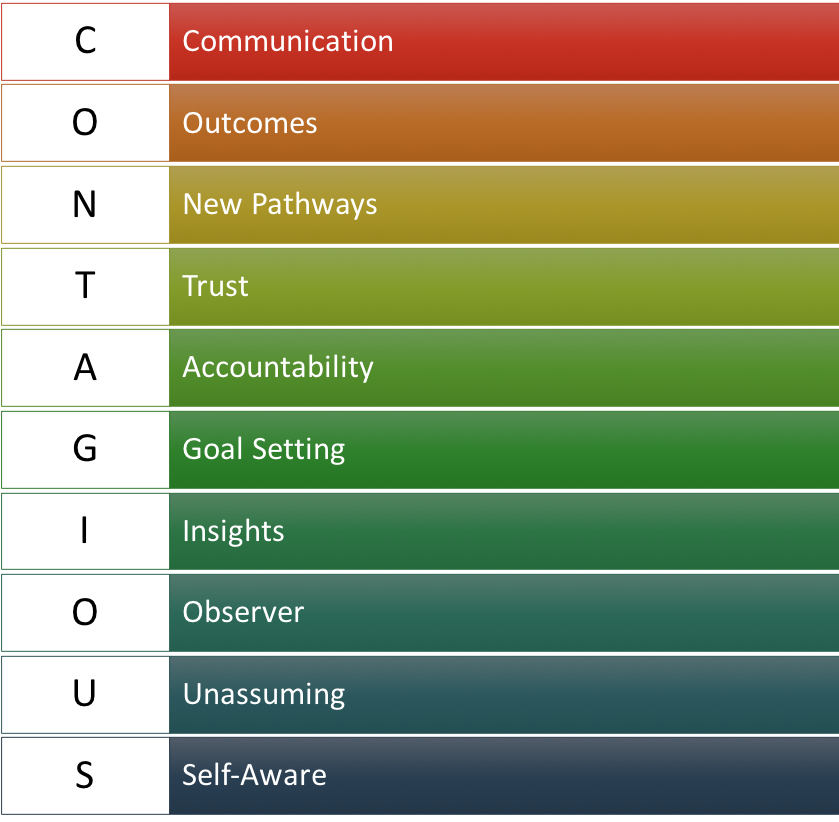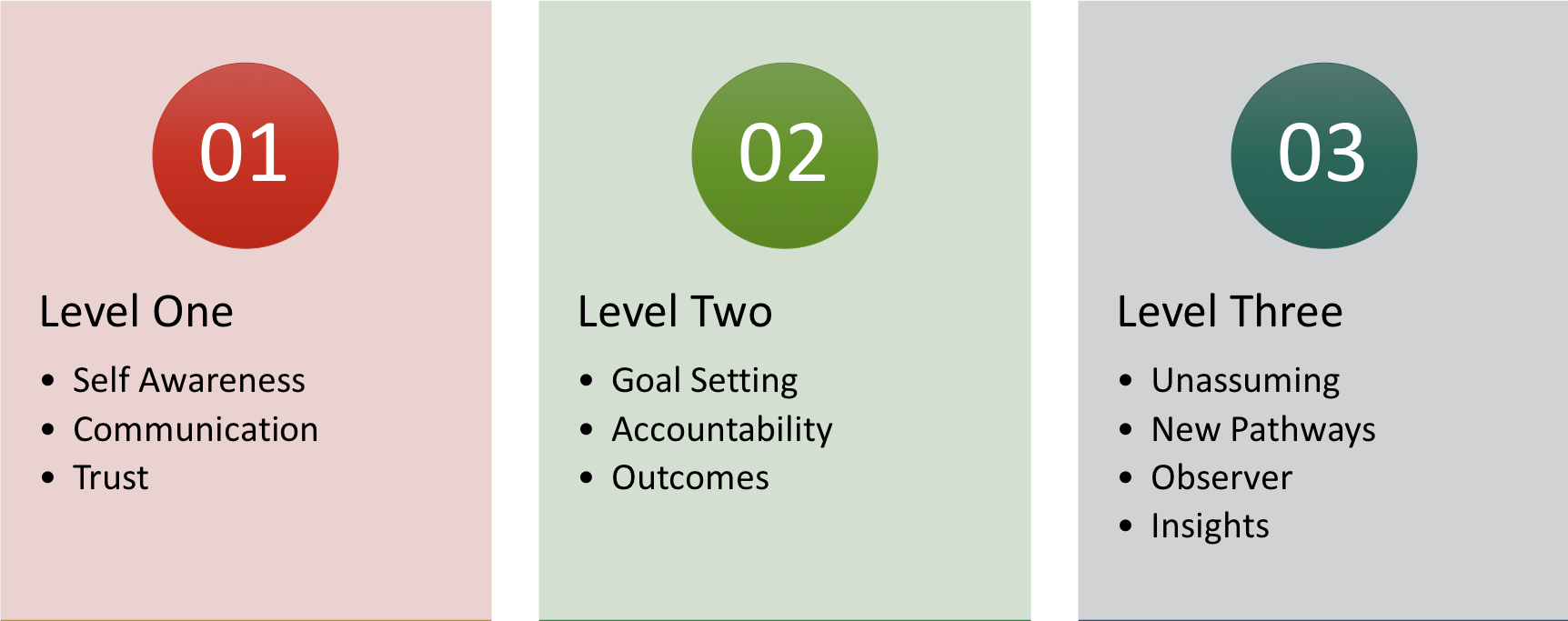The Contagious Leader Model
The Contagious Leader Model aligns specific competencies with coaching skill development for leaders.
There are ten Contagious Leader competencies.
Communication – the art of questioning, listening, feedback, being direct and using language effectively.
Outcomes – the ability to focus on the issues at hand and to create agreements on how to move forward
New Pathways – creating and supporting change by taking risks on behaviors, actions and outcomes.
Trust – developing deep relationships and partnerships with agreements and clearly defined roles.
Accountability – defining and measuring movement, resources, individual and team member committments.
Goal Setting – using SMART goals – specific, measurable, achievable, realistic and timely goal setting methodology.
Insights – identifying learning and growth nuggets and applying them similar or pattern opportunities. (critical thinking skills)
Observer – trusting the process, being present in the moment, defining your role in the conversation and hold it
Unassuming – entering into conversations from a place of “not knowing”, always being curious
Self-Aware – knowing personal strengths, acknowledging blindspots, exploring new parts of self, holding your personal container of space
Each competency has specific skill development spanning from fundamental to mastery level. Every competency comprises a stepping stones of a level.

The Contagious Leader Model ©
Contagious Leader Building Blocks

The 10 Contagious Leader competencies are broken down into three building blocks. Each block builds a foundation for competency development and preparation for success for the next block.
You can work on different building blocks the same time. Leaders who excel at lower level building blocks will be more successful at higher level building blocks.
Let’s look at an example.
You have a new employee starting in your organization. At this point, the relationship is at a formative stage. However, your experience has been mixed with giving feedback to your employees. Given your experience, you decide to discuss with your new employee how feedback is given so there are no surprises.
Level One:
You know your personal strengths and blindspots. You deveop a communication plan to discuss feedback. Forming the right words takes a bit of effort. With practice, you strive for mutual understanding.
Level Two:
Your discussion includes setting goals, establishing measureable outcomes and agreeing on feedback frequency. You establish joint accountability on how feedback is to be given, received and built into a development plan.
Level Three:
Your approach with your employee begins with curiousity. You explore their feedback experiences. Based on their input, you apply their preferences to insights gleened working with similar people. Together, you develop a path that supports joint outcomes.
Learn more about becoming a Contagious Leader
Prepare your workforce to adapt with the ever changing global world. Help them be exceptionally adept and pivot with confidence.

Lynn Dessert, MBA MCC
Executive Coach
